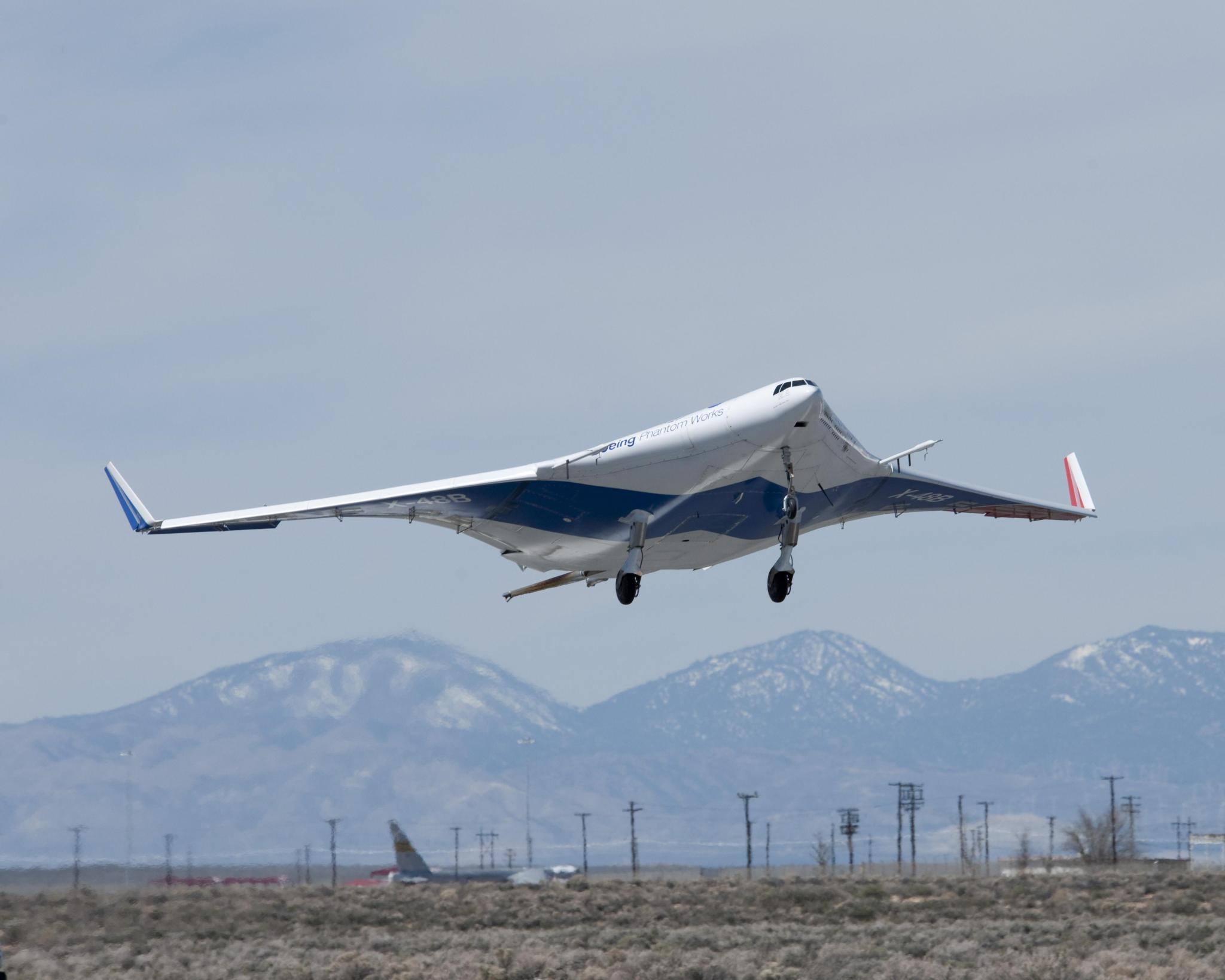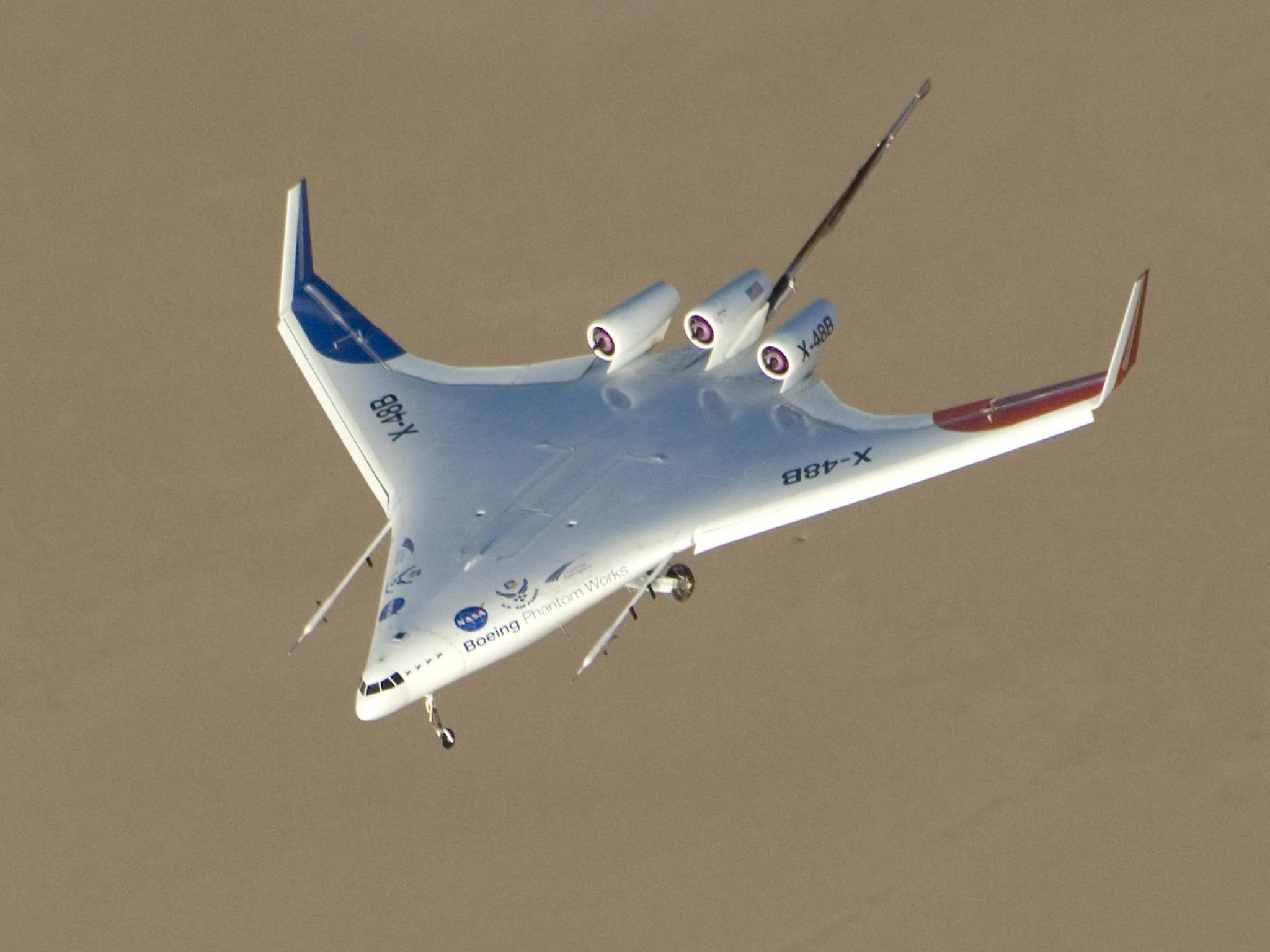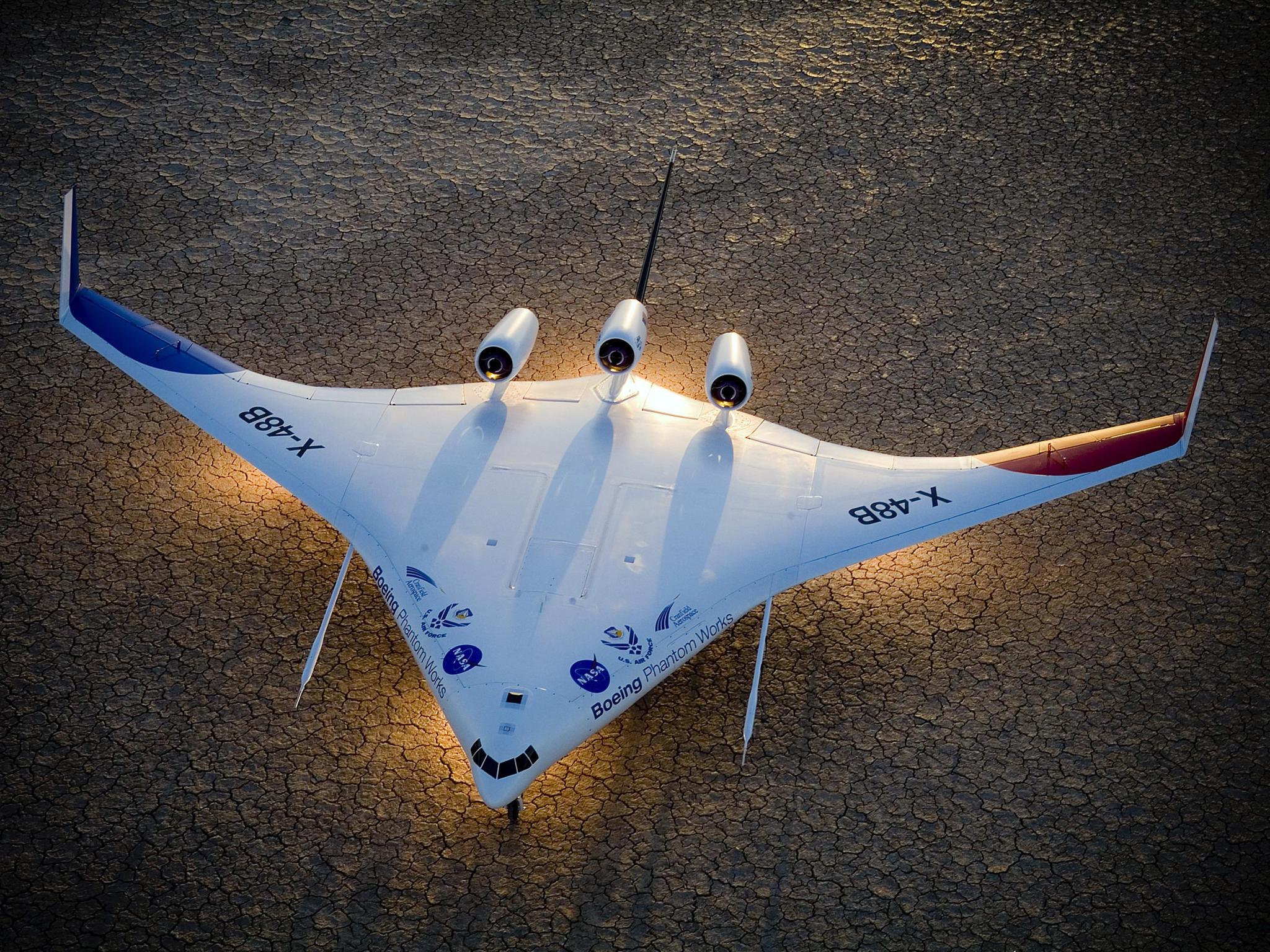
Boeing Phantom Works has partnered with NASA and the Air Force Research Laboratory to study the structural, aerodynamic, and operational advantages of the Blended Wing Body concept, a cross between a conventional plane and a flying wing design. The Air Force has designated the prototype the X-48B based on its interest in the design’s potential as a multi-role, long-range, high-capacity military transport aircraft. The 8.5%-scale, remotely piloted X-48B is dynamically scaled to fly much like the full-size aircraft would fly.
Following completion of installation of test instrumentation, one of two X-48B Blended Wing Body technology demonstrators began flight tests at NASA’s Dryden (now Armstrong) Flight Research Center in Edwards, California, in early 2007, and those tests continued into 2008. Researchers at NASA’s Langley Research Center in Hampton, Virginia, tested the second X-48B prototype aircraft in Langley’s historic full-scale wind tunnel in the spring of 2006, and the flight tests were intended in part to validate the results of those wind tunnel tests.
Advantages of the blended wing-body concept include high fuel efficiency, low noise and a large payload volume for the size of the aircraft. Flight testing at NASA Dryden focused on the low-speed, low-altitude flight characteristics of the blended wing-body configuration, including engine-out control, stall characteristics and handling qualities. The short flight test program is intended to demonstrate that the novel design can be flown as safely as current transports having a traditional fuselage, wings, and tail configuration.
The two X-48B Blended Wing Body technology demonstration aircraft were built by Cranfield Aerospace in the United Kingdom to Boeing’s specifications. The sub-scale prototypes have a wingspan of 20.4 feet, with prominent vertical fins and rudders at the wingtips and elevons along the trailing edges of the wings. The 523-pound gross weight aircraft are powered by three small model aircraft turbojet engines providing a maximum combined thrust of about 160 pounds. The X-48B has an estimated top airspeed of 118 knots (139 mph), a maximum altitude of about 10,000 feet and a flight duration of about 40 minutes.
































